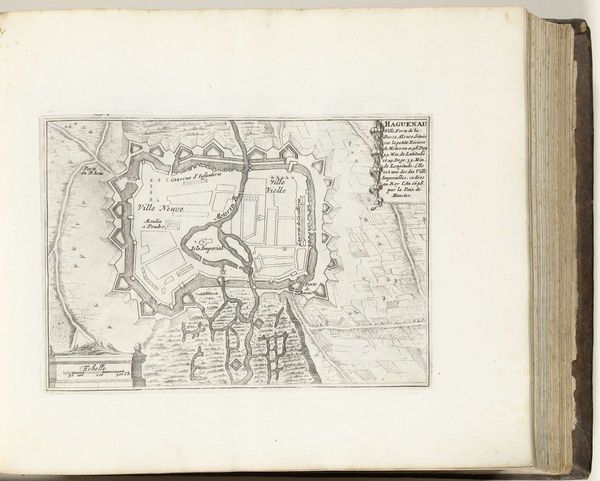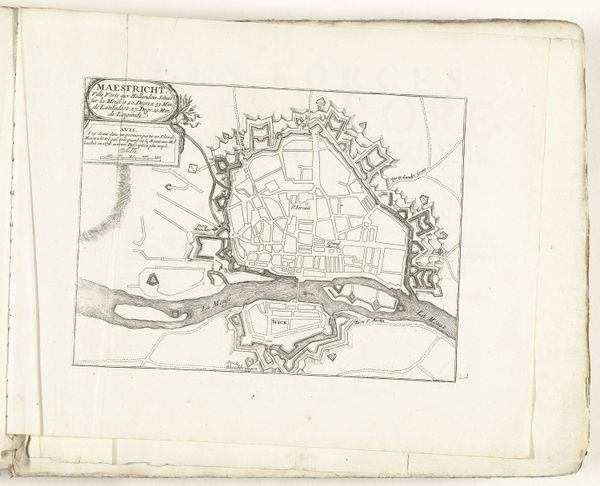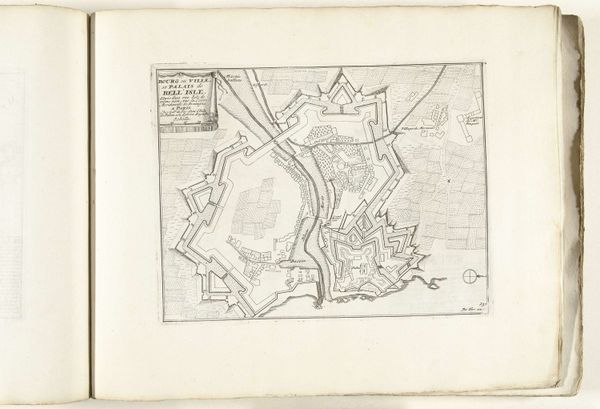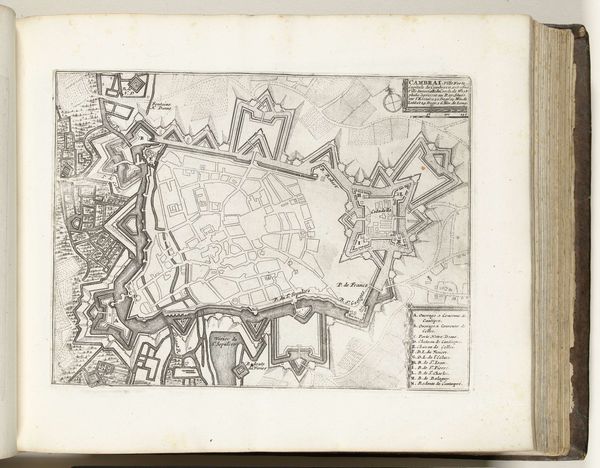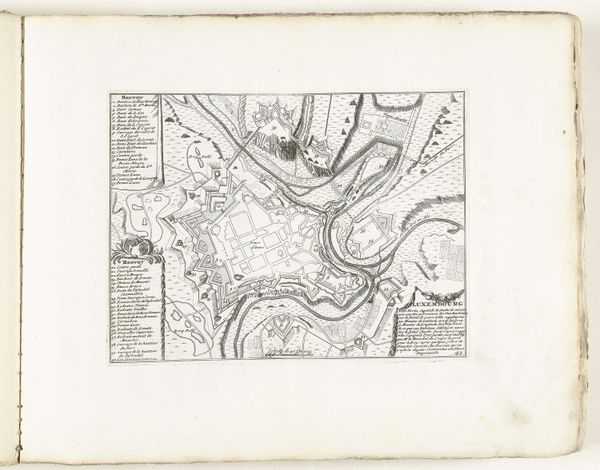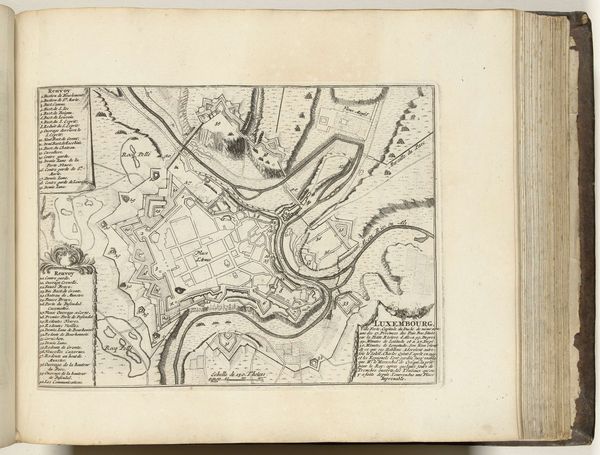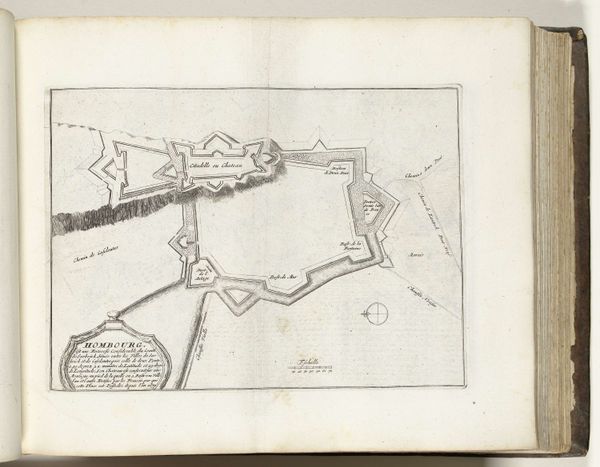
drawing, paper, ink
#
drawing
#
baroque
#
paper
#
ink
#
cityscape
Dimensions: height 219 mm, width 285 mm
Copyright: Rijks Museum: Open Domain
Curator: What a precise rendering! The geometric shapes imply such an imposing defensive presence; I wonder about the realities on the ground in this cityscape? Editor: We are looking at an anonymous ink drawing on paper from around 1693 to 1695. The work, titled "Plattegrond van Belle Ile", is currently housed in the Rijksmuseum's collection. What do you see? Curator: Immediately, a city under intense planning, an anxiety expressed through the elaborate fortifications. Each star-shaped bastion a testament to military strategy but also, I think, reflecting the era’s pursuit of order, mirrored even in urban planning. The city’s form practically screams control and power. Editor: Yes, and it speaks to broader geopolitical tensions. France, particularly under Louis XIV, was engaged in numerous wars. A meticulous plan like this shows not only the engineering prowess of the time but also the investment in securing territory, power, and trade routes. Consider the implications of these fortifications for the people living within them. Curator: Right! These shapes become containers, literally boxing in the lives of those inside. And I think this imposed structure perhaps becomes a symbolic framework dictating social interactions, restricting movement, psychologically shaping inhabitants. The implication of a fortress-city can not be understated. Editor: Precisely, maps aren’t neutral documents. The "Plattegrond van Belle Ile" seems to be a symbolic manifestation of authority. By reducing Belle Ile to an abstract set of shapes, the draughtsman effectively stripped it of local particularities, reimagining the place through the singular lens of strategic defense. Curator: Well said, seeing it as a powerful form of cultural and psychological imposition. The very act of mapping—of claiming space through representation—can, itself, dramatically influence how the inhabitants perceive that place and are being. Editor: Absolutely. Examining it closely encourages a deep dive into both the intent and the artwork’s potential ramifications on a community and on cultural identity itself. Curator: It leaves you with much to consider in terms of psychological and political impact, a sense of power as design. Editor: And in turn, hopefully makes us critically question power in its various representations even today.
Comments
No comments
Be the first to comment and join the conversation on the ultimate creative platform.


